- Home
- slideshows
- miscellaneous
- FEAR NO PHARAOH: Labor demonstrations have powered pay increases for 3,000 years. Here are 10 of the most impactful strikes - for better or worse.
FEAR NO PHARAOH: Labor demonstrations have powered pay increases for 3,000 years. Here are 10 of the most impactful strikes - for better or worse.
The first recorded labor strike occurred in ancient Egypt in 1156 BC, when workers stopped working to protest late payment from the pharaoh, Ramesses III.

From 400 to 200 BC, Roman laborers halted the entire economy for days during the Secession of the Plebs.

The Roman plebeians class represented builders, bakers, and common laborers that were one step above slaves on the social hierarchy. They sometimes stopped working en masse during "secessions" to demand fairer treatment during the Republic.
During the first secession in 494 BC, plebeians walked off the job to protest a law that would increase their debt. The strike resulted in a repeal of that law, as well as a government representative position for plebeians.
The final secession in 287 BC resulted in the formation of the Plebeian Assembly, meaning the class could now pass their own laws the elect their own representatives.
Source: History Daily
The first worker strike in the Americas occurred in Real del Monte, Mexico in 1766.
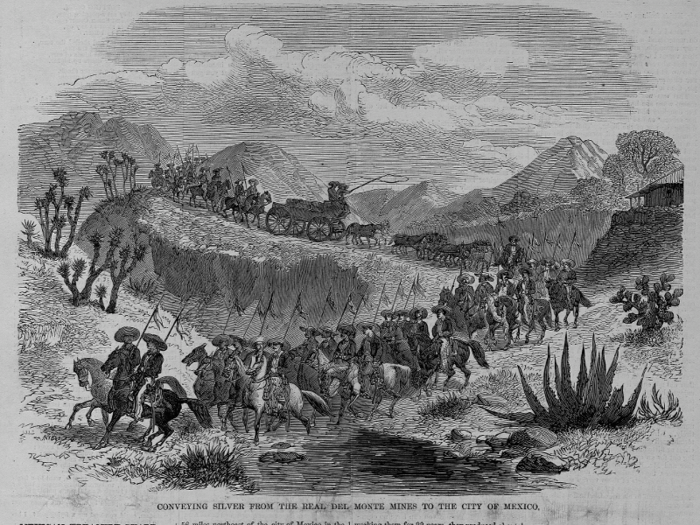
In 1766, miners working for Spanish colonists protested wage reductions and poor working conditions. The two parties eventually negotiated a better labor contract.
The strike began on July 30 after the mining management would not respond to a list of worker grievances. The strike lasted approximately one month, and ended when the administration agreed to increase wages and meet other demands.
Source: Culture Trip, Libcom
The first US strike of 20,000 of carpenters, coal workers, and public works employees occurred in Philadelphia in 1835, resulting in a sweeping victory for all workers.
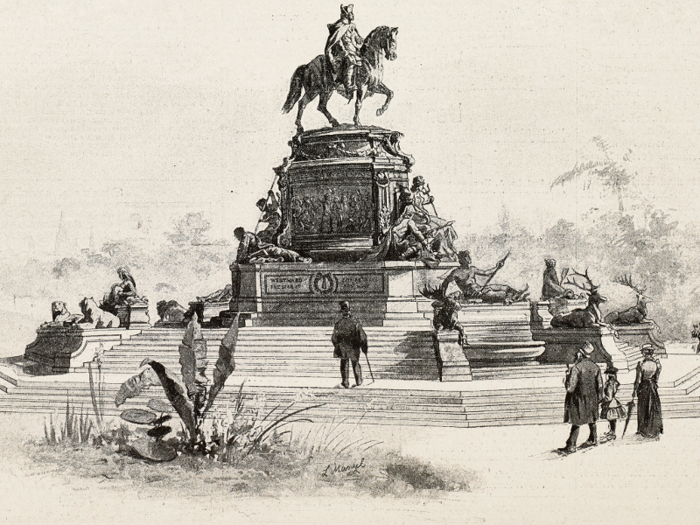
The first US general strike — or one that involved workers from different industries — occurred in Philadelphia in 1835 to call for shorter workdays. The strikes began when coal workers went on strike to call for ten-hour workdays in early June. They were soon joined by carpenters, painters, bakers, and more.
Three weeks after the general strike, the city imposed a 10-hour workday and raised wages for some workers.
Source: Pennsylvania Magazine
The 8-hour day is a result of an Australian stonemason strike that occurred 1856.
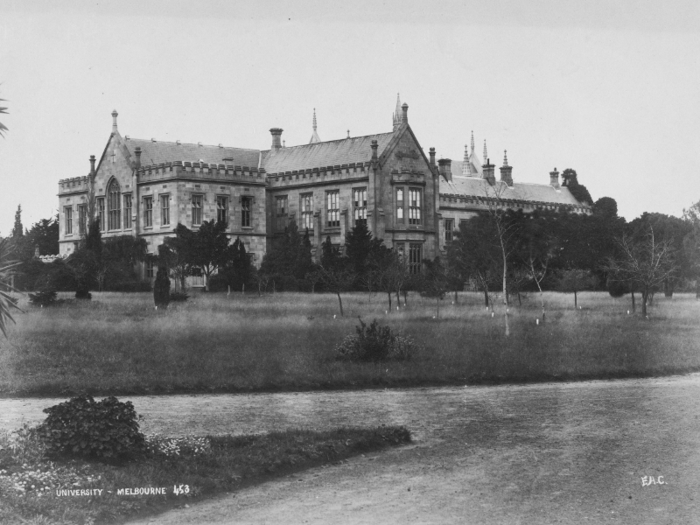
The 8-hour workday was first proposed by Scottish socialist Robert Owen in 1817. Owen called for a day that consists of 8 equal hours of work, recreation, and rest.
Australia's labor union, the Operative Masons' Society, decided to call for 8-hour day based on Owen's viewpoint. After negotiations failed with building companies, stonemasons put down their tools and walked off their job at Melbourne University in April of 1856.
Months later, employees and the government agreed on an 8-hour workday without a dip in wages.
The 8-hour workday came to the U.S. first in the state of Illinois, where the state legislature passed a law mandating it in 1867. Many employers refused to cooperate, prompting a massive strike — and earning the nickname "May Day," Business Insider's Shana Lebowitz reported.
The 40-hour workweek wouldn't go national until October 24, 1940.
Source: National Museum Australia
A 1894 strike resulted in 30 people dead, cost $80 million in damages, and led to the creation of Labor Day in the US.
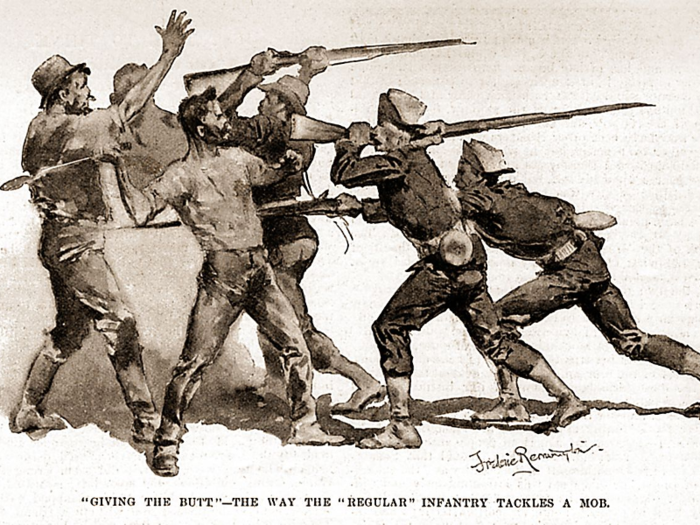
The Pullman strike represented a culmination of the rifts between labor and business owners in 19th century US, Business Insider's Áine Cain reported.
The strike occurred after workers for The Pullman Company, a luxury rail car service, called for better living conditions and higher wages.
Former President Grover Cleveland called in the federal soldiers to enforce an anti-strike injunction. Strikers and soldiers got into a violent clash in Chicago, resulting in 30 people dead.
Cleveland's later decided to declare Labor Day as a holiday for workers likely to please his constituents after the controversial handling of the strike.
Source: Business Insider
The US Postal Strike of 1970 brought mail delivery to a halt as 210,000 letter carriers stopped working for 8 days.
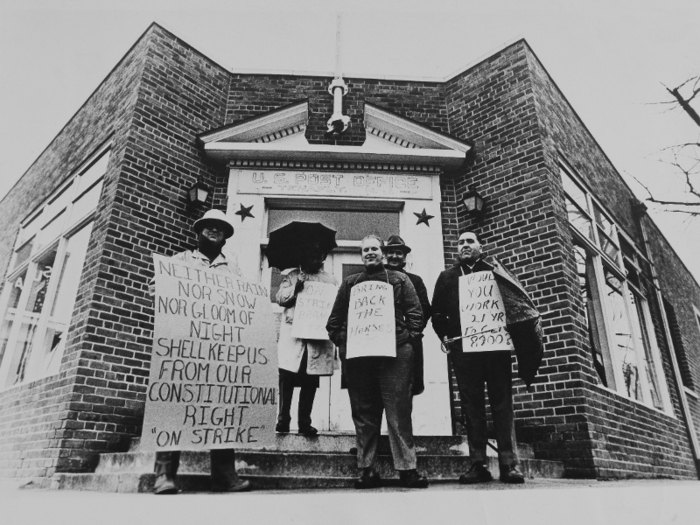
Before the strike, letter carriers worked physically demanding jobs for long hours and with limited breaks. Many workers did not receive substantial pay raises even after decades on the job, according to HISTORY.
Despite laws that prohibit federal workers from striking, USPS letter carriers defied their union and 30% of them went on a nationwide strike for eight days, the largest walkout of federal employees in history. The event disrupted millions of mail and package deliveries, eventually resulting in a national emergency. Former President Richard Nixon even deployed the National Guard to deliver mail.
The strike eventually ended, and Congress approved a 6% wage hike for postal workers.
In 1981, 12,000 air traffic controllers walked out after contract negotiations fell through — and Ronald Reagan fired nearly all of them.
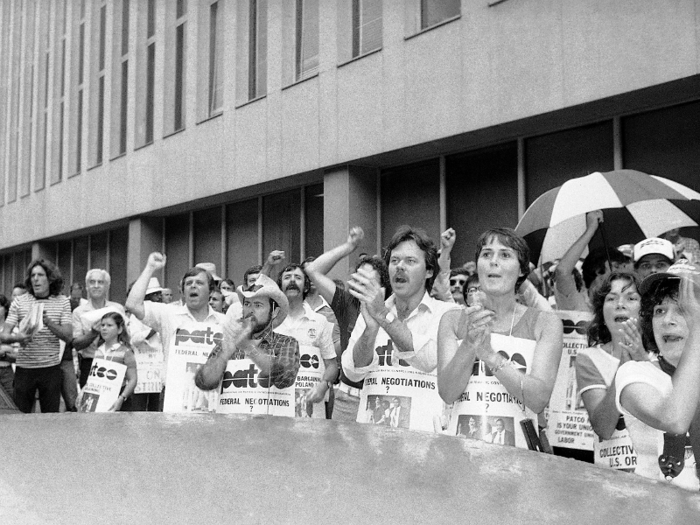
During the height of summer traffic, 7,000 flights were canceled after thousands of air traffic controllers went on strike to demand better pay.
The Professional Air Traffic Controllers Organization had called for reduced work-weeks and a $10,000 pay increase across the board, a package that would cost the Federal Aviation Administration $770 million. In response, the FAA offered a measly $40 million.
About 13,000 air traffic controllers went on strike, prompting former president Ronald Reagan to threaten to fire them if they don't return to work in 48 hours. About 11,000 continued to strike, and Reagan made good on his word.
While the mass layoffs delayed flights initially, supervisors and non-unionized controllers had managed to bring 80% of flights back to schedule. The strike was considered a failure, and Reagan banned the demonstrating the air traffic controllers from working for the FAA again.
Over 100,000 miners in Britain went on a year-long strike in 1984 after the government, led by Margaret Thatcher, announced job cuts.
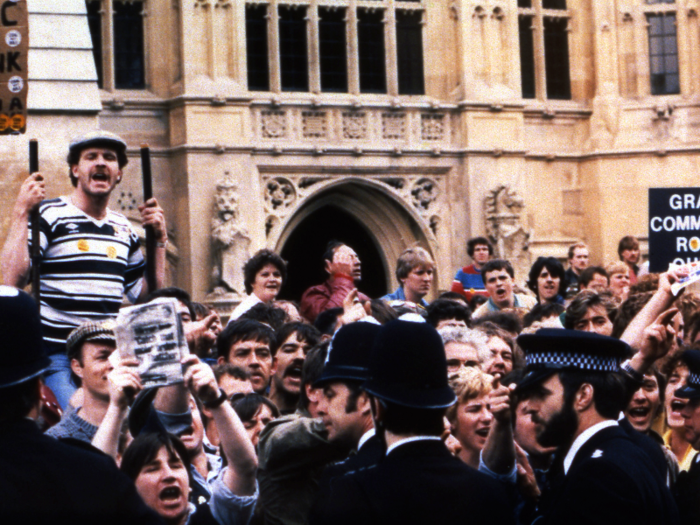
Conservative right-wing leader Margaret Thatcher sought to make the British coal industry more efficient. In March 1984, Thatcher and the National Coal Board announced 20 mines would close, erasing 20,000 jobs.
Days after the announcement, 165,000 miners, led by the National Union of Mineworkers, went on strike. Thus began a tense, year-long strike, where men would throw pickets — known as "flying pickets" — at pits where miners still worked at.
The strike grew violent during a confrontation at a coking plant in June 1984, when police and strikers through bricks and fought each other. In December, two strikers killed a taxi driver by hitting him with a concrete block intended for a working miner.
The strike eventually ended in March 1985, and is considered a victory for Thatcher and her Conservative Party. The event also shrunk the NUM's influence in politics, according to PBS.
Source: National Coal Mining Museum for England, BBC, PBS
In 2016, millions of Indian workers protested Narendra Modi's labor reforms and called for higher wages in a one-day strike.
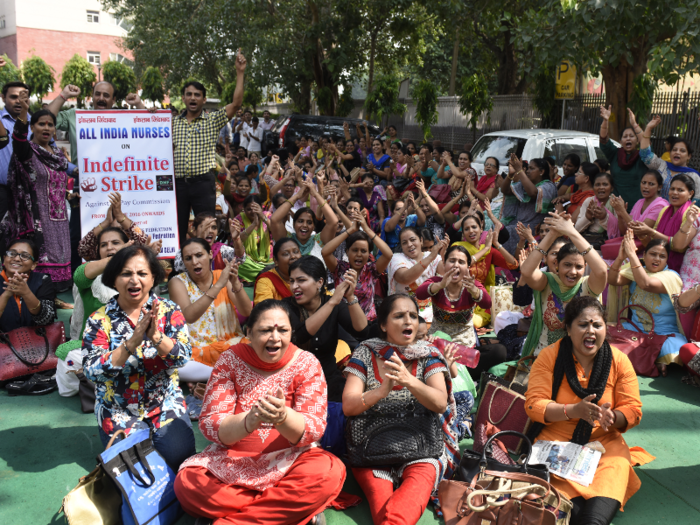
Workers in banking, telecom and other industries protested Modi's economic reforms that scaled back labor laws and shut down some companies.
The strike caused state banks and power stations to close and public transportation to stop, according to The Guardian. Schools and colleges closed, hospital procedures were delayed, and railways halted.
Unions called for higher minimum wages and universal social security.
The one- or two-day strike is form of mass action that Indian workers have used with some regularity since the 1990s.
In January 2019, 150 million workers went on a two-day strike.
Source: Reuters, The Guardian
Popular Right Now
Popular Keywords
Advertisement